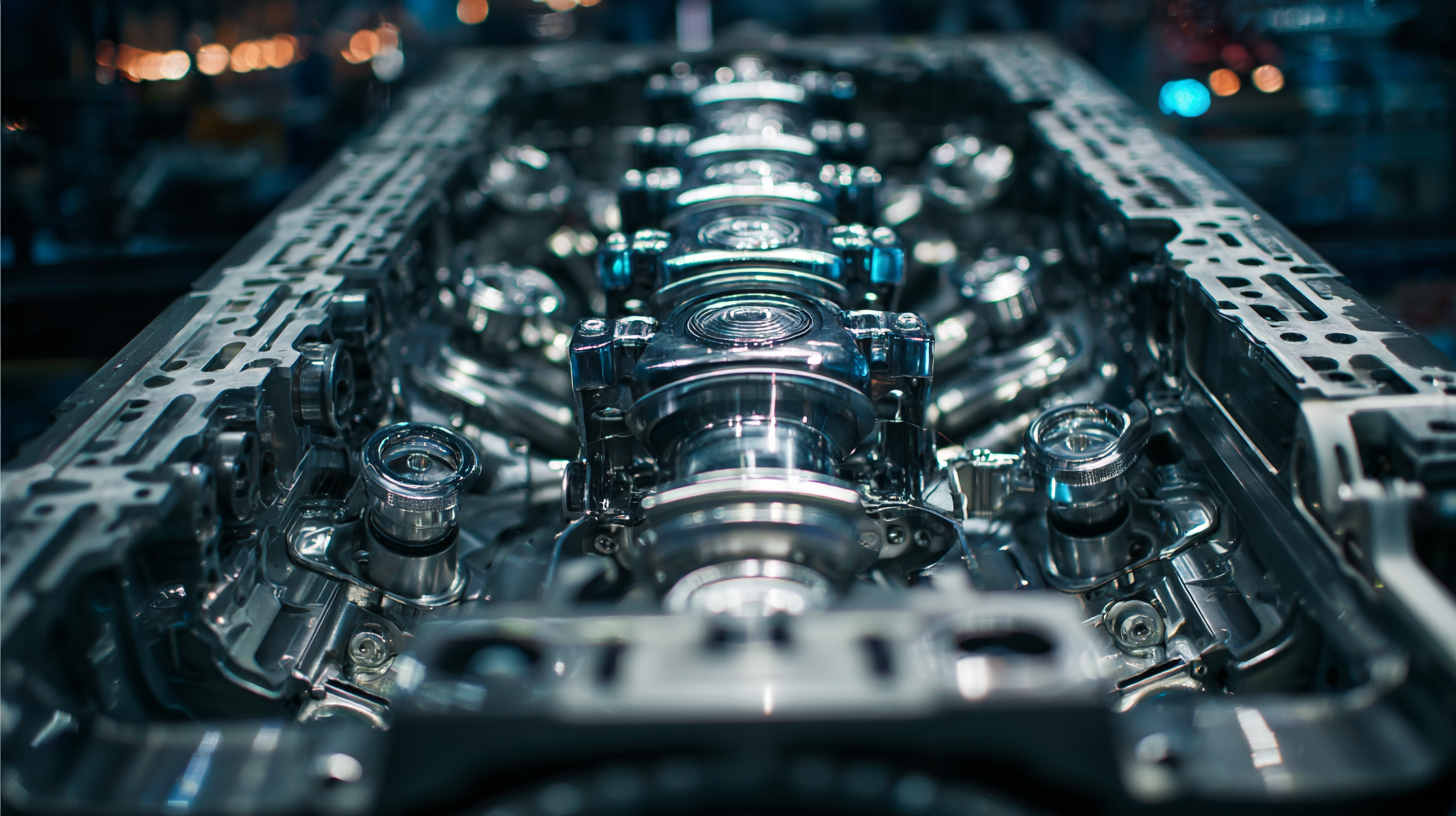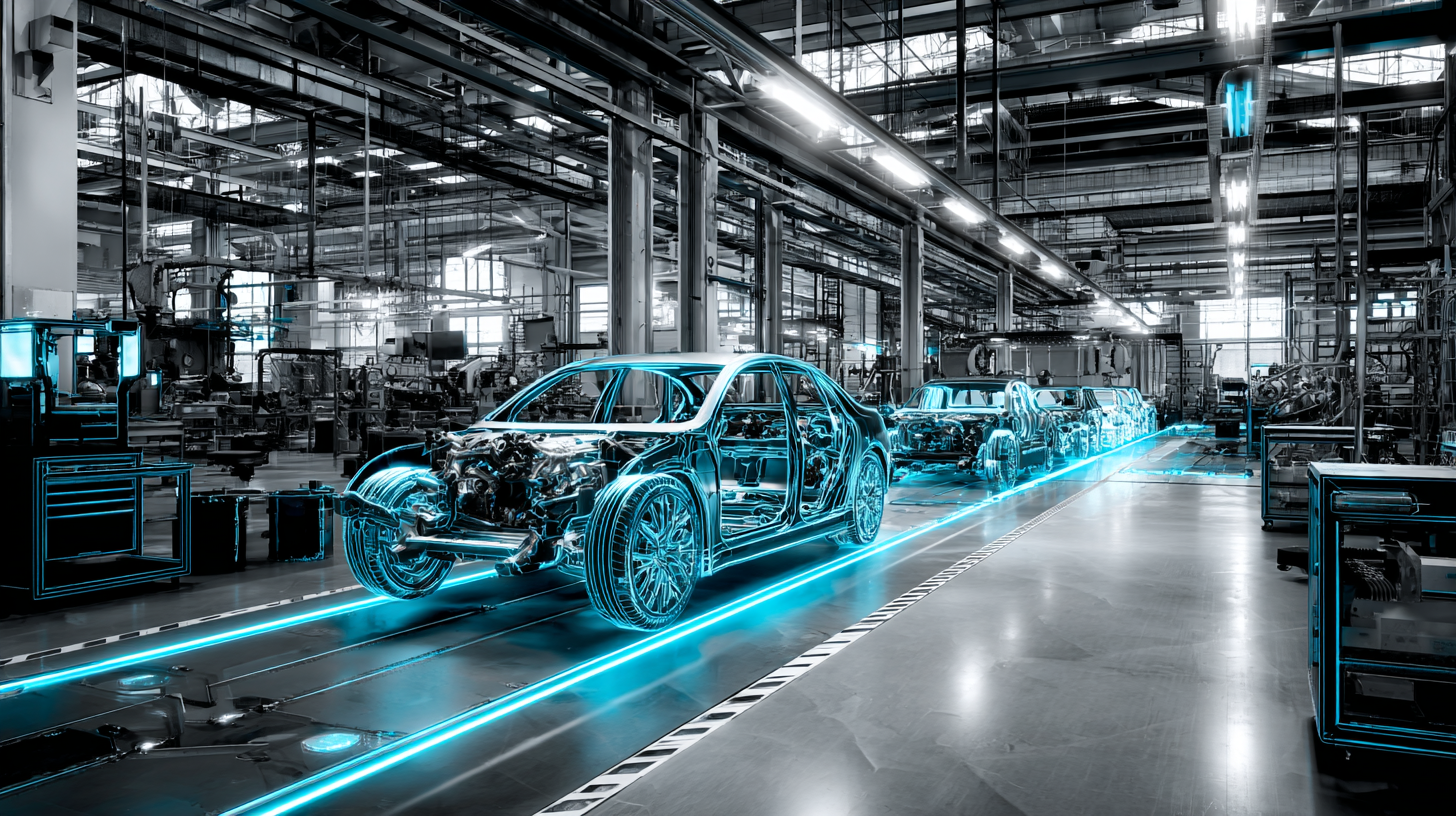China's Quality Evolution in Automotive Mechanical Engineering Driving Global Demand
In recent years, China's automotive mechanical engineering sector has undergone a remarkable transformation, positioning the nation as a leader in global automotive supply chains. According to the China Association of Automobile Manufacturers, the country produced over 25 million vehicles in 2022, solidifying its status as the world's largest automobile market. This evolution is driven by advancements in technology, stringent quality standards, and a robust export strategy, leading to a surge in demand for Chinese-made vehicles and components worldwide.

As the automotive industry increasingly emphasizes sustainability and innovation, China's commitment to developing cutting-edge mechanical engineering solutions is not only enhancing its domestic capabilities but also establishing it as a preeminent exporter in the global marketplace. This dynamic shift underscores the importance of automotive mechanical engineering in fostering competitive advantages and meeting the rising global demand for high-quality automotive products.
China's Automotive Mechanical Engineering: A Journey of Quality Transformation
China's automotive mechanical engineering sector has undergone a remarkable journey of quality transformation over the past decade. According to a report by McKinsey, China is projected to become the largest automotive market in the world, reaching nearly 40 million vehicle sales by 2025. This growth is driven largely by advancements in engineering practices, improved manufacturing processes, and a strong emphasis on quality assurance.
As domestic companies invest in high-quality materials and innovative technologies, they are meeting global standards more effectively than ever before. The China Automotive Technology and Research Center reports that over 70% of local manufacturers now utilize cutting-edge computer-aided design (CAD) and computer-aided manufacturing (CAM) technologies. This shift not only boosts productivity but also enhances the reliability and performance of automotive products, leading to increased global demand. The shift towards high-quality production reflects a strategic move to elevate China's role in the global automotive supply chain, positioning it as a key player in the industry.

Innovative Technologies in China's Automotive Sector Elevating Global Standards
China's automotive sector is undergoing a remarkable transformation, driven by innovative technologies that are elevating global standards. As the world moves toward electrification, artificial intelligence, and sustainable practices, China is at the forefront of adopting these trends. According to industry reports, the global electric vehicle (EV) market is expected to see robust growth, projected to reach significant revenue milestones by 2033 amid increasing demand for sustainable transport solutions. The shift toward electric vehicles is not just a trend; it's a necessary evolution to meet global sustainability targets.
Additionally, the integration of advanced technologies, such as IoT and machine learning, is reshaping the automotive landscape. These innovations enable manufacturers to enhance vehicle safety and efficiency, while also streamlining production processes. For example, the trend of autonomous vehicles continues to gain momentum, with significant investments being funneled into research and development. As reported, the automotive industry is embracing a future where connectivity and automation define the driving experience.
Tips: To stay informed about the evolving automotive sector, consider subscribing to industry newsletters and attending conferences. Engaging in discussions with professionals at events like the China Automotive Intellectual Property Annual Conference can provide insights into the latest developments and regulatory changes shaping the industry. Furthermore, monitoring technological advancements will help businesses align with emerging market demands and position themselves as leaders in innovation.
The Role of Chinese Manufacturers in Meeting Global Automotive Demands
China’s automotive manufacturers are increasingly pivotal in addressing global automotive demands, especially in the context of the burgeoning electric vehicle (EV) market. As noted in recent reports, China dominates the production landscape, generating nearly two-thirds of the world’s EVs and commanding a significant share of the battery industry. This rapid growth in China’s automotive sector is not merely a regional phenomenon; it has profound implications for global markets, positioning Chinese companies as key players in the international supply chain.
The rise of Chinese manufacturers aligns with a broader trend of sluggish growth in the global car market, which is projected to face continual uncertainties. Despite these challenges, China’s advancements in EV technology and production capabilities—particularly in high-tech manufacturing—provide a competitive edge. This swift evolution is underpinned by substantial investments in research and development, enabling Chinese companies to innovate and address the rapidly changing preferences of global consumers. As these manufacturers refine their engineering processes and enhance quality standards, they are not only meeting current demands but are also setting the stage for future automotive trends.

Sustainability Practices in China's Automotive Industry: A Global Perspective
The Chinese automotive industry is undergoing a significant transformation, aligning with
global sustainability practices that
emphasize environmental responsibility. As manufacturers increasingly adopt eco-friendly materials
and advanced technologies, the focus has shifted towards reducing emissions and enhancing
fuel efficiency. Companies are implementing
rigorous lifecycle assessments, which not only minimize carbon footprints but also promote the
use of renewable energy sources throughout the production process.
In addition to technological advancements, collaboration among industry players is fostering a
more sustainable automotive ecosystem.
Partnerships with research institutions and international organizations are instrumental in
developing new standards and practices that prioritize sustainability. These efforts resonate on
a global scale, as countries worldwide look to China as a model for integrating sustainable
practices into their automotive sectors. The drive towards sustainability not only enhances the
global competitiveness of Chinese automotive manufacturers but also establishes a pathway
towards a cleaner, greener future for the
entire industry.
The Future of Automotive Mechanical Engineering: China's Influence on Global Markets
China's automotive mechanical engineering sector has increasingly become a powerhouse, shaping global markets and setting new standards for quality and innovation. As the largest car market in the world, China's influence can be seen in the rise of electric vehicles, advanced manufacturing technologies, and smart automotive solutions. The infusion of technological advancements and a skilled workforce has enabled Chinese manufacturers to enhance the performance and reliability of their vehicles, making them competitive on the global stage.
Moreover, China's commitment to sustainable development is driving a shift in how automotive engineering is approached worldwide. With a strong emphasis on electric and hybrid technologies, Chinese companies are not only meeting domestic demand but are also exporting their innovations to markets around the globe. This transformation highlights the need for collaboration and knowledge exchange among international automotive players, reinforcing China's pivotal role in the evolution of automotive mechanical engineering. As global consumers increasingly prioritize sustainability and connectivity, China's strategies will likely redefine industry standards and consumer expectations, shaping the future landscape of automotive engineering worldwide.
